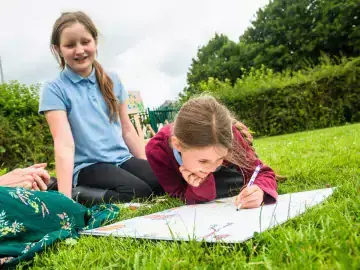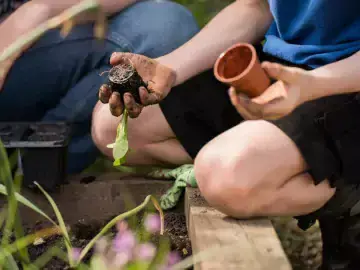
Find that plant!
This activity will familiarise children and young people with the different growing conditions plants may need, and enable learners to find plants suitable for different spaces and needs. Learners will explore the Royal Horticultural Society’s ‘Find a plant’ online search to filter plants by criteria such as sunlight, soil and plant type. They will also have the opportunity to look for plants suitable for their own school site.
This activity is a great first step to involve young people in choosing the plants that will feature in their Nature Park.
Preparation
Before starting the activity, it is helpful to have worked together to explore and find out as much information about your outdoor space as you can. The app-based activities like investigating weather and microclimates, investigating environmental quality and shade mapping will help you build a picture of your outdoor space. Mapping the habitats on your site will also let you know what wildlife-friendly spaces you already have, and where more could be created.
What you need
- Access to devices with internet connection (the online tool is best accessed on a computer rather than a tablet)
- Optional: Projector or screen to display the step-by-step guide / website
- ‘How to use RHS Find a plant’ Powerpoint
- ‘Find that plant!’ worksheets, one per pair/group/person
Location
Indoors and outdoors
Useful guidance
Resources
Step by step
- Explain to learners that you will be using the internet to look for plants suitable for different spaces. Ensure learners have a ‘Find that plant!’ worksheet to note down their plant choices – learners can work individually, or in pairs or groups. Alternatively, you may wish to work through the activity as a class and make the plant choices together. Learners will need to have access to computers with internet connection to use the online tool. The web address for the tool is rhs.org.uk/plants - then click on Find a plant. Give learners a few minutes to explore and get used to the tool and what different buttons and menus will do.
- Share the ‘How to use RHS Find a plant’ Powerpoint. This can be shown at the front of the class as a step-by-step guide, or printed out for older learners to follow as they work their way through the tool. Once learners are familiar with how to use the tool, they can work through the prompts on their worksheets to find plants suitable for the different scenarios.
- After learners have found plants for the three prompts, the final section of the worksheet asks them to find plants suitable for their own outdoor space. To remind learners of what they’ve already discovered, refer back to findings you’ve made about your site or previous Nature Park activities completed.
- It may help to walk around your outdoor space or spend a few minutes in the area you are looking to improve, and discuss what the space is like and what types of plants learners think might work there. (Big plants or small plants? A few plants or lots of plants? Trees? Flowers? Climbing plants?)
- If you can get outside, you could try this soil texture test from Campaign for School Gardening to identify what type of soil you have in your outdoor space. Learners can then use their findings to identify soil type when using the online tool. (See the 'More information' section in the downloadable Activity Guide for handy definitions of each soil type to help.)
- Back inside, ask learners to complete the final prompts on the worksheet to find plants suitable for their outdoor space. This can be worked through together as a group/class, or individually before sharing everyone’s findings.
Reflection
Invite learners to share which plants they found for their Nature Park – why did you choose those plants? (Did you like the colour, the shape of the leaves or flowers?) Were any plants popular choices across the group?
Curriculum links
This activity can be used to support curriculum knowledge and skill development in IT and geography, alongside enhancing nature education, with age and skill appropriate adaptations.
What to try next

Planning your Project: A Nature Park Guide
Begin activity
Change grey to green
Begin activity